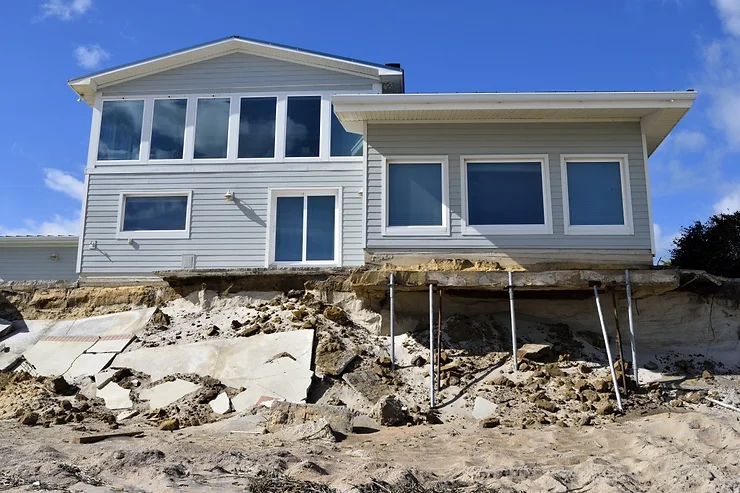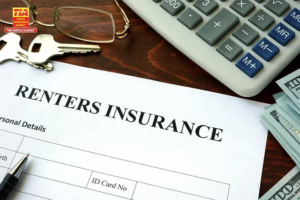Owning a home is likely to be one of the biggest financial commitments you’ll make in your lifetime. Thus, it only makes sense to protect it. Among a myriad of other things, that means ensuring the home sits on a structurally sound foundation.
Although you may never see it, your home’s foundation is a vital aspect of its strength and stability. When damaged, serious structural problems can result. Your floor may become uneven. Huge gaps may appear in your walls. Your roof may also sag.
Depending on the degree of the damage and the repair method, you could be looking at a bill of up to $40,000. This brings us to the question that many homeowners oftentimes ask – will my homeowners insurance cover foundation repair?
The short answer is “it depends.” It depends on the cause of the foundation damage!
The longer answer we got from Jim Oursler of Granite Foundation Repair, a professional foundation repair company servicing DFW area, who cared to elaborate on the topic.
What is included under a standard homeowner’s insurance policy?
Check your policy to see what’s covered and what’s not. Generally speaking, a typical homeowner’s insurance company covers risk events like fires and tornadoes. If these incidents wreck your home, you can rest assured you’ll be covered.
Risk events like floods and earthquakes, on the other hand, aren’t usually covered under a standard policy. Homeowner’s insurance companies consider these to be ‘too risky.’
So, if a flood is the cause of your home’s foundation damage, then don’t expect your homeowner’s insurance company to pay for the repairs.
The following table shows a summary of risk events covered and those that a standard policy doesn’t cover.
- Events Covered:
- Water Damage
- Volcanic Eruption
- Falling Objects
- Vandalism
- Damage Caused by Vehicles
- Riots or Civil Disturbances
- Explosions
- Windstorm
- Damage Caused by Aircraft
- Lightning or Fire
- Events Not Covered:
- Earthquakes
- Construction Work Damage
- Floods
- Sinkholes
- Damage Due to Neglect and Improper Maintenance
- Pressure from Tree Roots
- Natural Settling or Cracking of the Foundation
- Foundation upheaval or expansion
Floods and earthquakes need supplemental insurance policies. So, if you live in areas where they are prone, add them to your policy.
Risk events like faulty construction, tree roots, and natural settling won’t be covered by your standard homeowners insurance. These are considered a case of negligence.
Your options when your homeowners insurance won’t cover foundation repairs
Besides paying out of pocket, you have limited options in this regard. One such option is to prove that the cause of the damage is actually covered.
You could argue that the cause of the damage was because of a burst pipe and not due to a natural flood. The burst pipe then caused an internal flood that led to your foundation shifting. ‘Internal floods’ is a covered risk event.
Your best bet is to hire professional services to ascertain the exact cause of the damage. This way, you’ll be able to tell whether the cause of damage is covered or isn’t prior to filing a claim.
To be safe, if you live in a flood-prone area like Florida or earthquake-prone area like California, make sure to strongly consider taking supplemental policy. With $30,000 being the average insurance claim, it’s certainly worth a consideration.
Proactive Ways to Keep Your Foundation Well-Maintained
1. Always be on the lookout for signs of damage.
Inspecting your foundation can help you prevent extensive damage and, as a result, costly repairs. Telltale signs of foundation damage include:
- Counters and cabinets separating from the wall
- Floors beginning to sag or appear uneven
- Gaps forming around window frames or exterior doors
- Doors sticking or failing to open and close properly
- Your home appearing to sink
- Cracks and other types of fractures beginning to appear on the foundation, walls and/or floors
2. Correct your landscape grade.
There are two types of grades: negative and positive grades. Negative yard grading slopes toward your home. When it rains, large volumes of water will stand next to your home’s foundation. Over time, this can lead to foundation failure.
Positive yard grading ensures water stays away from your home’s foundation. This is what you should aim for. This is because water flows away from your foundation.
3. Correct ground and roof drainage.
Flood water can cause adverse effects on your home’s foundation. Poor ground drainage can cause water to stand next to your foundation. Also, improperly maintained gutters and downspouts can lead to flooding.
4. Maintain constant levels of moisture.
Too much water or very dry conditions don’t go well with foundations. Dry weather makes the soil shrink, leading to foundation problems. Maintaining the right moisture level is therefore key.
You should, nevertheless, pay attention not to overwater your foundation.
In the end, foundation maintenance is the best way to avoid costly repair damages. If damage occurs to your foundation, let it be because of an insurable event and not because of negligence.





